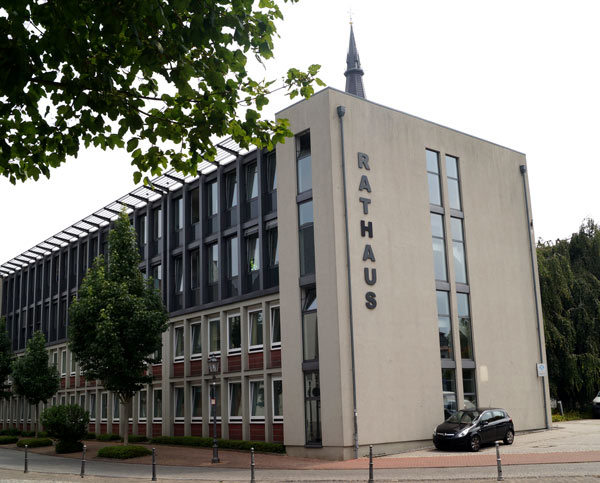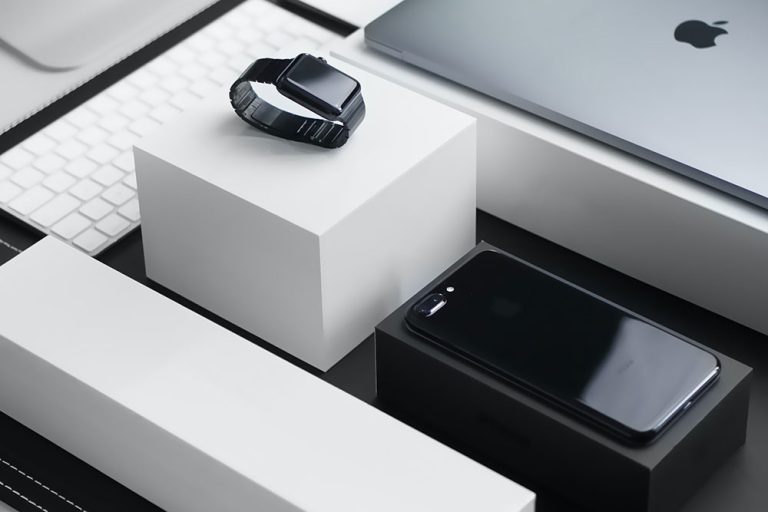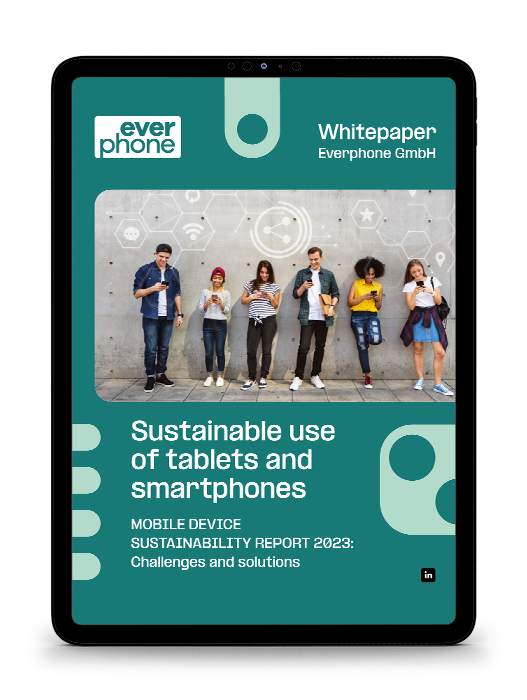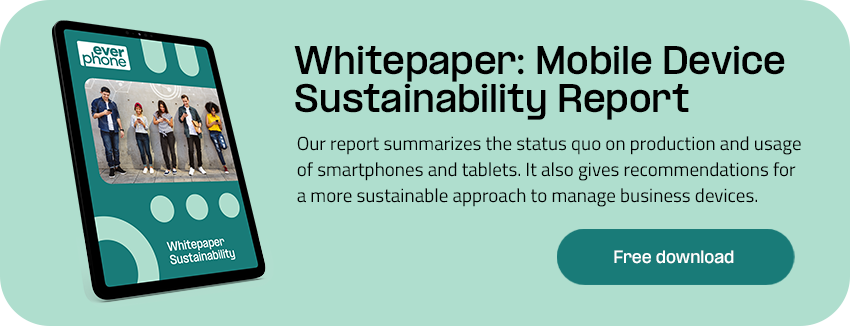How does choosing a refurbished device/extending my rental lower the environmental impact?
FAQ
How does choosing a refurbished device/extending my rental lower the environmental impact?
Smartphones may be small, but their impact on the environment is bigger than many people think. Most of the device’s environmental impact comes from producing the phone and getting it into the users’ hands — the use phase only accounts for a relatively small part.
Carbon dioxide emissions
This unequal distribution is directly reflected in the carbon emitted in different stages of a smartphone’s lifecycle: The production, more specifically the processes of mining, refining, constructing, and transporting a smartphone represents approximately 85% of the device’s total CO2 emissions. That means buying one newly produced phone takes as much energy as recharging and using a smartphone for ten years (Apple, 2022; Maga et al., 2018).
Each smartphone model has an individual carbon footprint, which is in most cases calculated and certified by an external agency and disclosed by the manufacturer. The footprint of a smartphone can vary based on the manufacturer, the specific smartphone model, and the storage capacity. Our calculation on carbon savings is always based on the exact carbon footprint of each device.
Samsung is currently not publishing the individual footprint of their devices, but you can check out the footprint of your iPhone or your Google Pixel.
Water
The production of mobile devices consumes water during both raw material extraction and during manufacturing the battery. Especially lithium, the key element for the production of phone batteries, requires a lot of water for its extraction. During that process the water is polluted and poorly, if at all, cleansed. The exact data for the water consumption or water footprint of smartphones varies since the manufacturers keep a low profile regarding this topic and do not differentiate between product groups, products, or production stages. Most sources calculate water consumption to be around 12,000 litres per smartphone (GRACE, 2017; Friends of the Earth 2015).
Raw Materials
Around 60 to 70 different materials are required to produce one single phone. About half of those materials are metals, which are used to manufacture chips, circuits and other components necessary for smart devices. These metals can be found in rock formation and are extracted by mining at very high resource and energy costs (Bookhagen et al., 2021). A much higher volume of raw material is mined for the extraction of these metals. Mining often takes place under precarious working conditions in developing countries with weak environmental and human rights standards.

This corresponds to the weight of 4.3 hand luggage suitcases with a respective weight of 8 kg.
Reducing the environmental impact of smartphones
After describing the environmental impact of producing a new smartphone, the section below explains how prolonging the usage period and using refurbished devices contributes better environmental performance.
Environmental impact of longer usage
As explained above, the extraction and manufacturing phase is the one with the highest CO2 emissions and the most significant environmental impacts. Therefore,the single biggest factor to reduce the overall environmental impact is to extend the phone’s expected lifetime (Maga et al., 2018). An extended usage phase of one year within the Everphone DaaS-model increases the effective usage phase by 50% from two to three years. Consequently, if two people decide to prolong their rented devices this corresponds to one device less to be purchased from Everphone, a reduction of 50% on the ecological footprint. This applies to carbon emissions, water usage, and raw material use because one phone less purchased by Everphone, means one phone less needs to be produced.
Environmental impact of using a refurbished phone
Refurbishing and reusing is another way to extend the lifetime of smartphones. The environmental impacts for the refurbishment process in the form of material and energy usage are minimal in relation to the amounts needed for a new production (Maga et al., 2018; Cooper & Gutowski, 2015). For smartphones, refurbishment includes data cleansing, if necessary, the renewal of individual components, and the removal of traces of usage. Studies estimate that using a refurbished smartphone instead of a newly produced one reduces around 70% of Carbon emissions (refurbed.de, 2022). The refurbishment of one phone can safe 14 kg of raw material and over 900 litres of water (refurbed.de; 2022; Zumengen, 2020).
Want to learn more?
Sources
Apple (2022). Environment. https://www.apple.com/de/environment/, accessed 25.11.2022
Bookhagen et al. (2021). Metalle in Smartphones, in: Commodity TopNews, Ausgabe 65, Bundesanstalt für Geowissenschaften und Rohstoffe, https://www.bgr.bund.de/DE/Gemeinsames/Produkte/Downloads/Commodity_Top_News/Rohstoffwirtschaft/65_smartphones.pdf, accessed 15.11.2022
Cooper, D.R. & Gutowski, T.G. (2015). The Environmental Impacts of Reuse: A review. Journal of Industrial Ecology, 21 (1), 38-56
Friends of the Earth (2016): Mind your step: The land and water footprints of everyday products,
https://www.twosides.info/wp-content/uploads/2018/05/mind-your-step-report-76803.pdf, accessed 10.1.2022
GRACE Communications Foundation (GRACE). (2017). The Hidden Water in Everyday Products.
https://www.watercalculator.org/footprint/the-hidden-water-in-everyday-products/, accessed 25.11.2022
Maga et al. (2018). Treibhausgas- und Ressourceneinsparungen durch Wiederverwendung von Smartphones und Tablets, in: Müll und Abfall, Faschzeitschrift für Abfall- und Ressourcenwirtschaft, 05/2018, 217-280
Merchant (2017). The One Device: The Secret History of the iPhone
Refurbed.de ( 2022). Umweltschutz.
https://nachhaltigkeit.refurbed.com/de/?_ga=2.33093822.1251002508.1669404888-959710786.1669404888, accessed 25.11.2022
Zumengen (2020). Environmental Impact of a local Circular Economy Business Model and a Carbon and Water footprint analysis for Smartphone Refurbishment. https://jyx.jyu.fi/bitstream/handle/123456789/71853/URN%3aNBN%3afi%3ajyu-202009235937.pdf?sequence=1&isAllowed=y, accessed 25.11.2022


Related FAQs
How much is the device exchange?
Can I use my company phone for private purposes?
What is the Everphone portal?
What services are included in Workplace as a Service?
We use ServiceNow. Can we integrate device procurement with it?
Is Workplace as a Service available for MacBooks?
What’s the difference between Device as a Service (DaaS) and Workplace as a Service (WaaS)?
Do I have to be 24/7 available with my company phone?
How does choosing a refurbished device/extending my rental lower the environmental impact?

What else do you want to know?
If you haven’t found the answer to your questions, just ask us directly via this form.
We’ll get back to you in no time!






